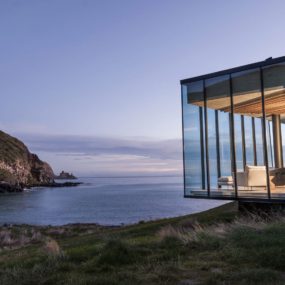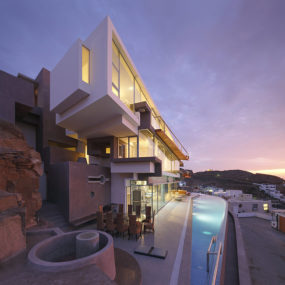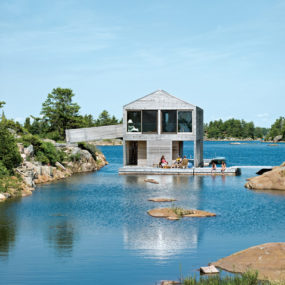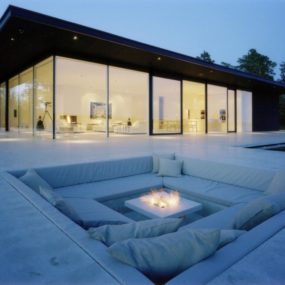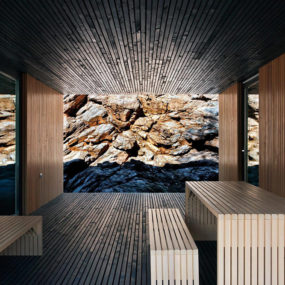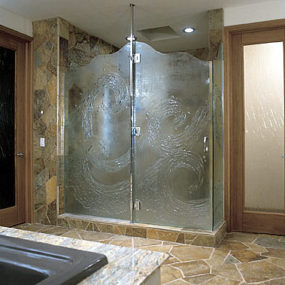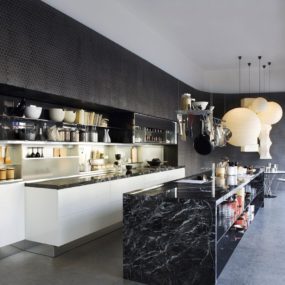
Located on a steep south facing mountain slope overlooking Indian Arm in North Vancouver, BC, Canada, the Cliffhanger Residence clings to a site of only 25Wx100L feet with a decline of 60ft over the 100ft length. The difficulties of the site was a challenge that architects Kevin Vallely Design met head on to come up with a layout of three volumes, each lower then the previous. The final composition presents the first volume of garage, office and roof deck, the second includes the social zones of den, kitchen, dining and living while the third level is a complete Master Suite. All combined the Cliffhanger Residence consists of 1986sf of efficient and multifunctional spaces. Just like with a boat, which this dwelling seems to take its muse from, there is no nook left unused.
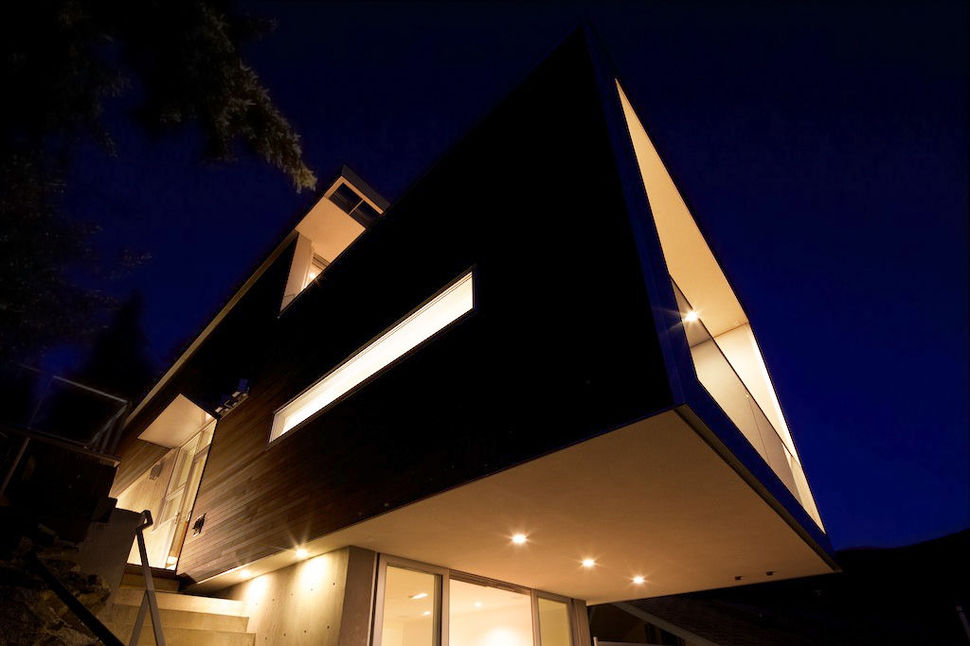
The intermediate level is the largest volume within the home. In order to obtain the necessary square footage required to present all the social zones within one level, the architects cantilevered the volume out and over the mountainside creating both a panoramic roof deck above and a sheltered ground level deck below in the process.
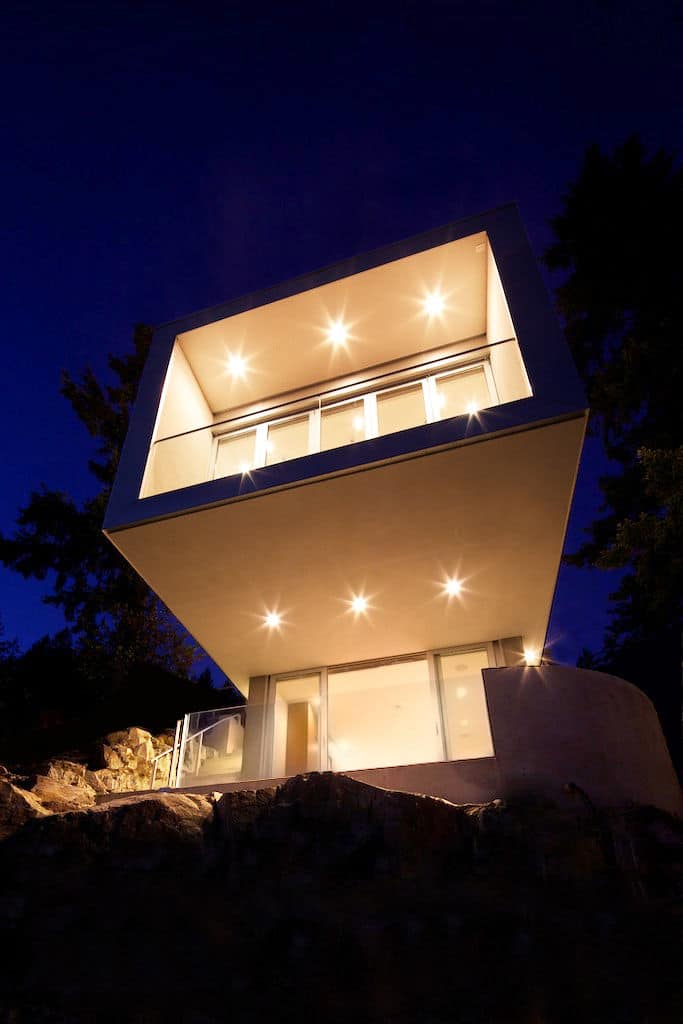
The profile of the social volume is reminiscent of a ship with long, linear windows along the sides and an open terrace or bow – albeit a flat one – in front. A doorway from the kitchen zone leads out to a flight of stairs that connects with the lower deck before continuing downwards to a private dock where the homeowner can enjoy a scenic boatride from Indian Arm to Burrard Inlet, past Canada Place and Stanley Park before connecting to the Pacific Ocean.
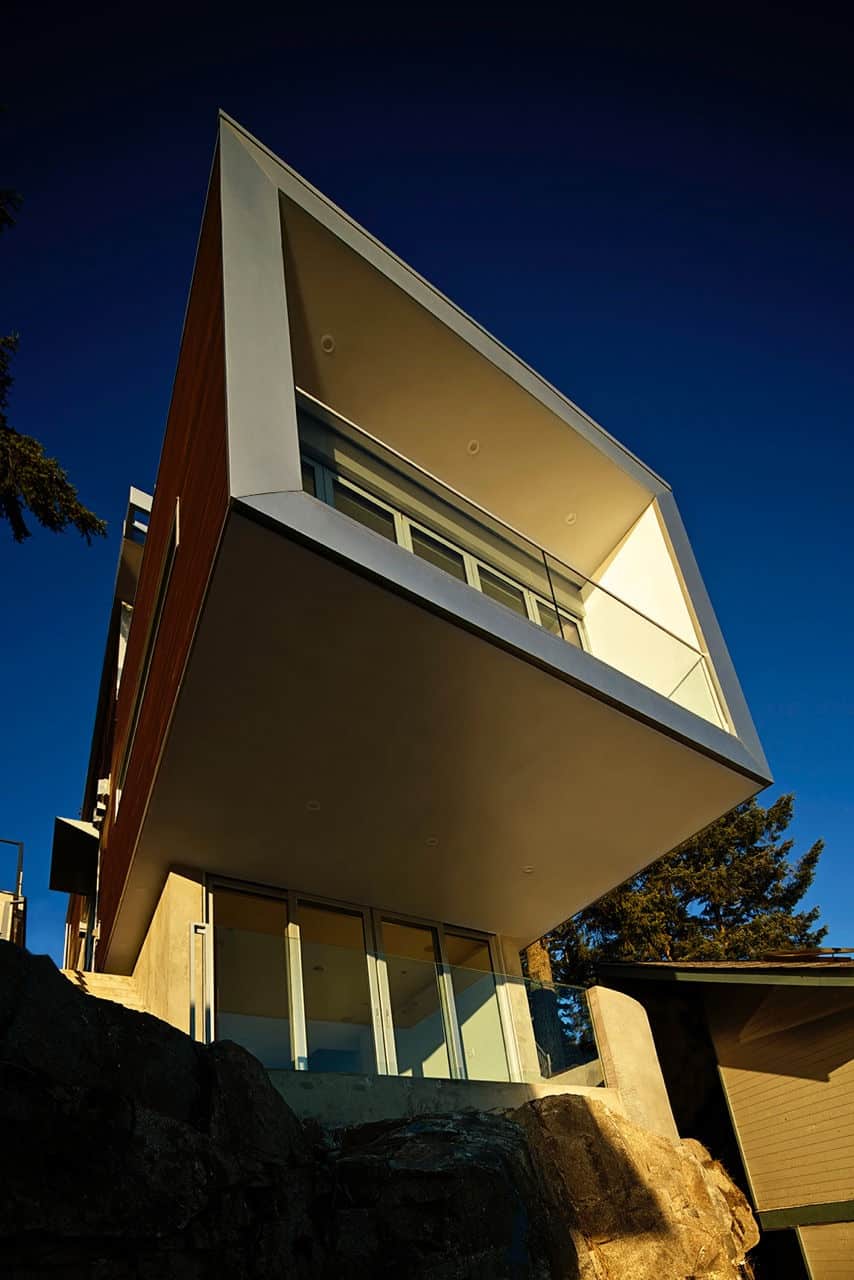
Kevin Vallely Design designed the Cliffhanger Residence to be rated highly energy efficient as rated by the Canadian Ener-guide energy efficiency program and the home was built by Greater Vancouver’s only explicitly modern residential contractor Econ Group. The home represents a regional adaptation to a modern aesthetic combining both the big city aesthetic and the ruggedness of the mountainside.
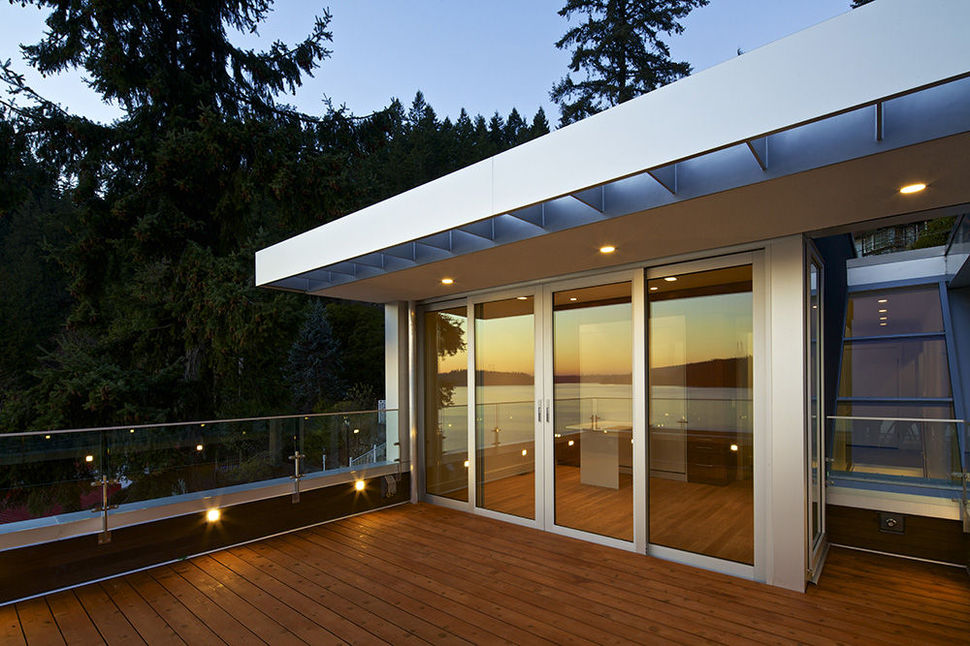
This combination of urban and rugged allows the dwelling to sit comfortably within its landscape while still offering top of the line comforts. Not too flashy and not too basic as seen here via the roof top deck. A cedar decking meets up with a tempered glass rail system without any additional frivolity other then the necessary lighting. Mother nature brings the colour, sculptural elements and sound system.
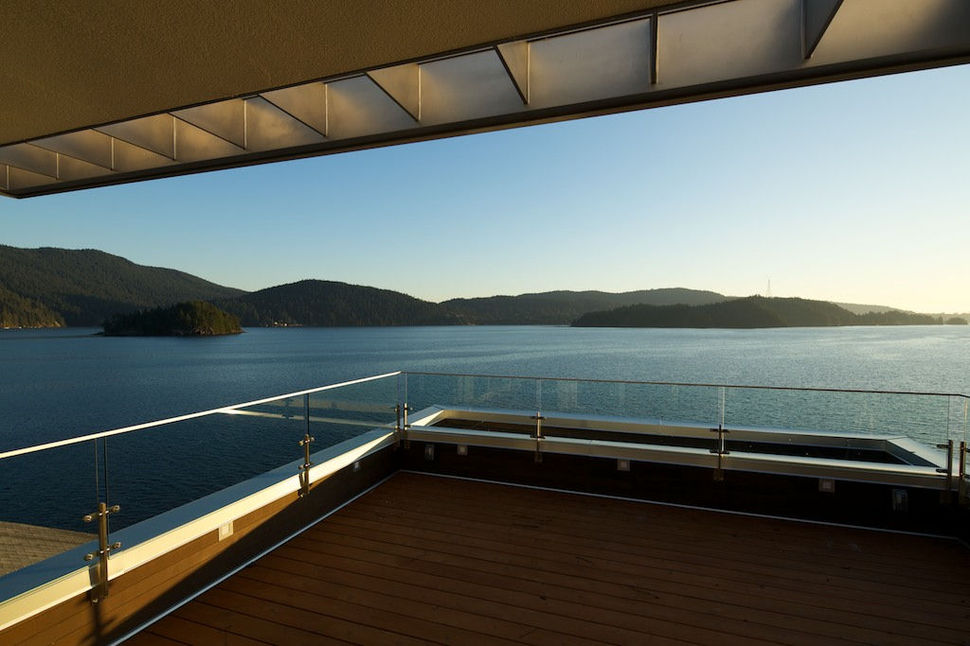
And what better colour, sculptural elements and sound system could you possibly have then the brilliant blues and greens of Indian Arm, the rising land formations and the sounds of nature.
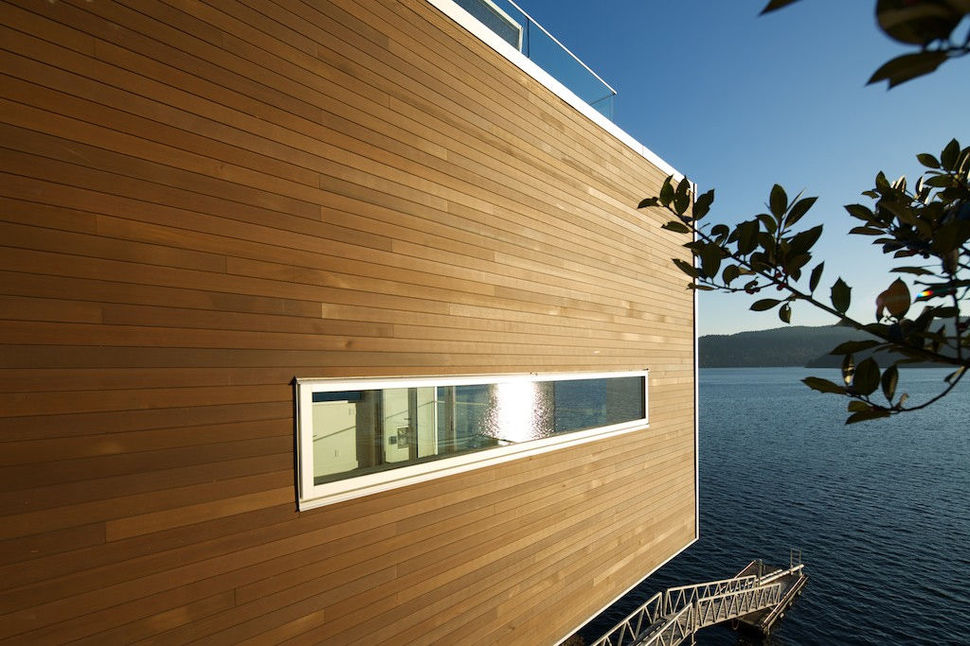
The cubular shape to the exterior continues the less is more aesthetic and the clear tongue and groove cedar siding offers the best in natural wood durability for the climate and is a prominent design aesthetic to the Pacific west coast The sections of welded aluminium docking are light weight and highly durable. The docking is designed in sections for ease of installation which is an important feature when designing for a steep mountainside.

The exterior cantilevered stairs are pored concrete and present a deep tread for a more relaxed travel from level to level.
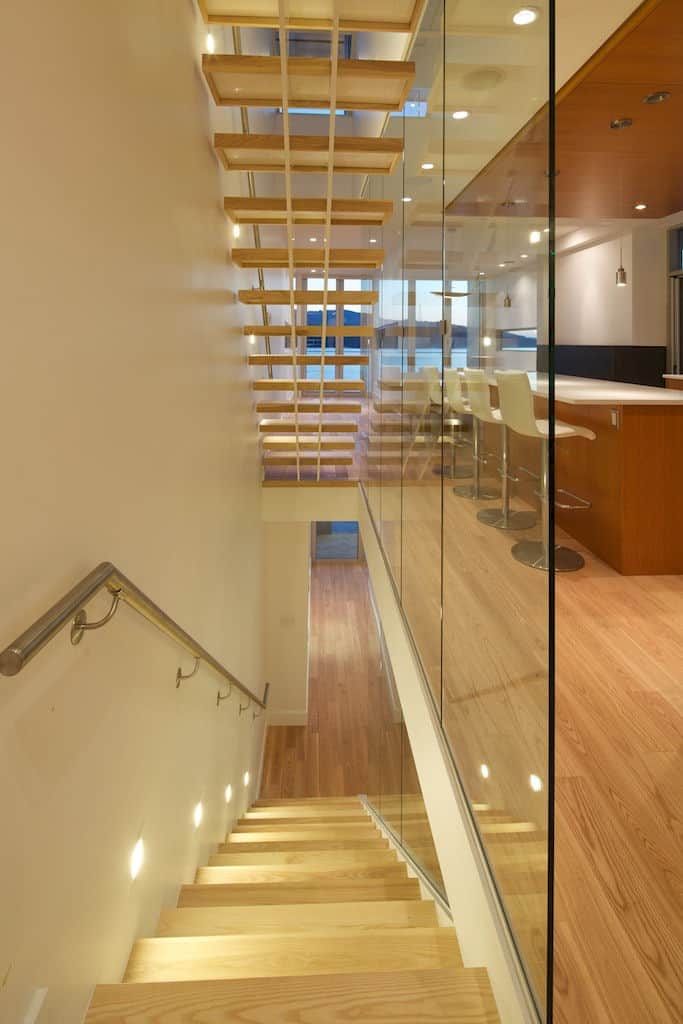
Aside from outdoor stairs, there is also a glassed corridor inside that features a staircase of open risers, double central stringers and a Stainless Steel handrail. While narrow, the stairwell feels anything but. The large glass balustrade brings visual depth to the corridor while at the same time allowing light to flood and fill the space. The complete volume is one complete sculptural moment of clean and contemporary geometric lines.

The stairs do not double back on each other from level to level but instead stop on one side of the kitchen before continuing on upward (or down) on the other side. By doing so the footprint of the corridor is kept minimal allowing more width for the kitchen itself. With this width the architect was able to design the kitchen with an island that included bar seating. Had the stairs doubled back on each other the island would not have been possible.
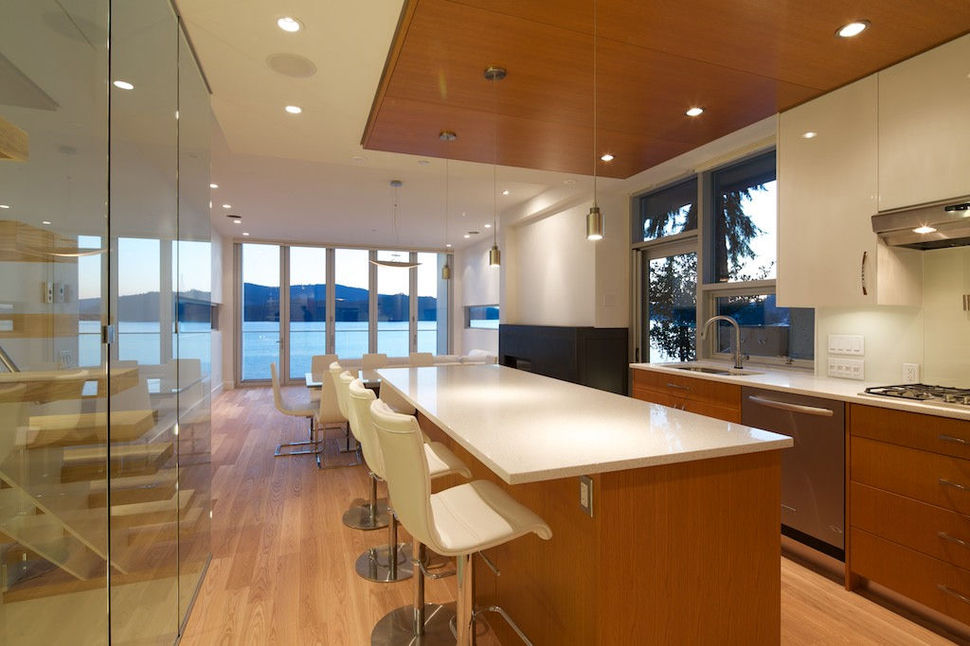
By using an open floor plan the architect was able to establish water views from every location – even from the stairwell corridor. While most of the home is outfitted in white, the architect chose to bring in warmer earth tones on the lower kitchen cabinets as well as the ceiling area above. As the kitchen is located in the back end or cliff side of the dwelling, these warmer tones are a visual representation of the mountainside that hugs this end of the home.
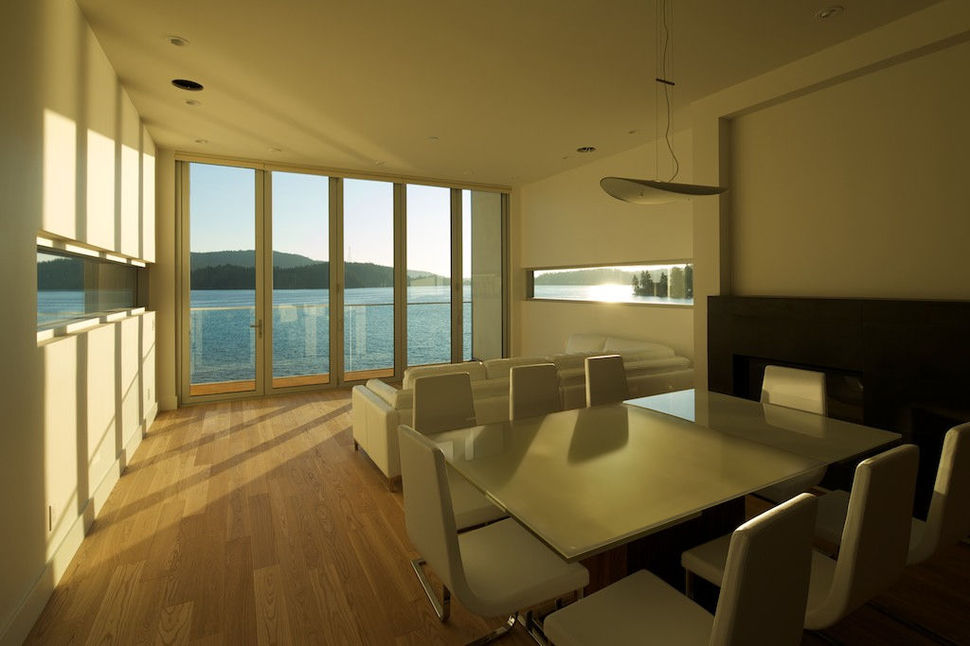
The dining room is located in front of the centrally located fireplace and just past the fireplace is where the two long and narrow horizontal windows begin. It is these two windows that suggest boat design and that subtle reference is a definite Pacific West Coast aesthetic.

The full height glassed bifold doors that front the living room can be opened wide to let the warm summer air spill into the core of the home, or they can be shut tight to keep the cold winter air at bay.
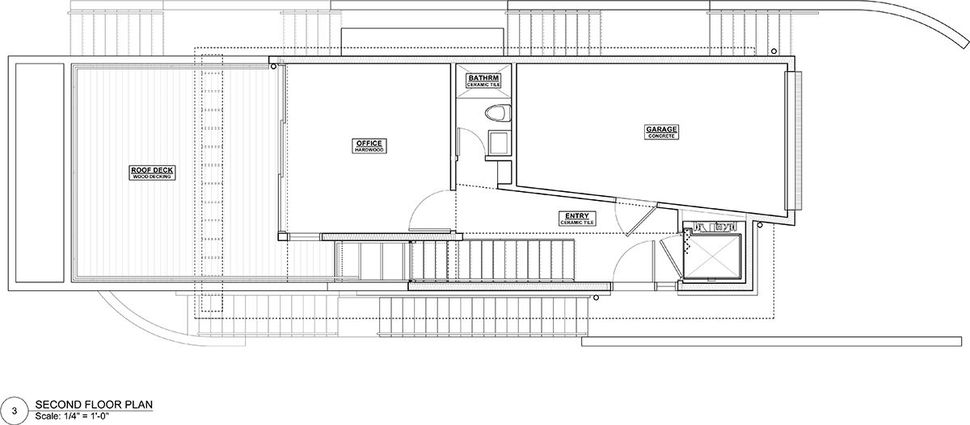
The first volume of the home presents a garage, foyer, bathroom, office and roof deck. It also offers a foyer elevator tucked discreetly against the garage.
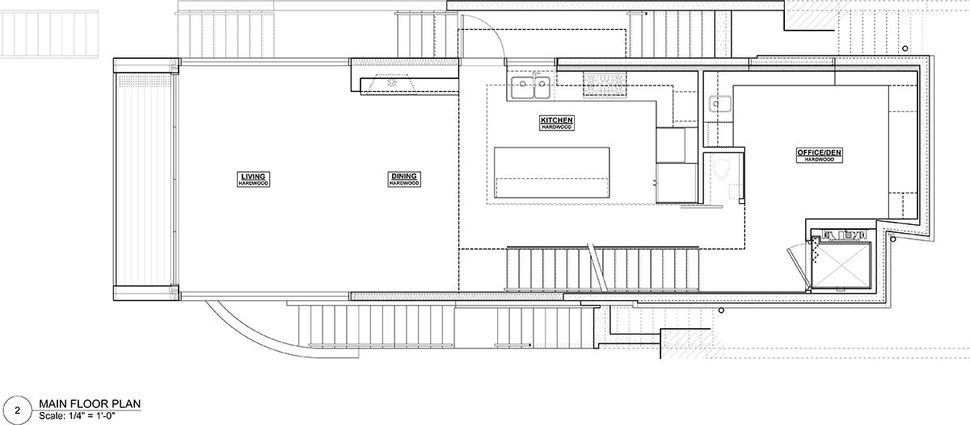
One floor down is the social volume that can be arrived at via the indoor stairwell, the outside stairs – or by the elevator.
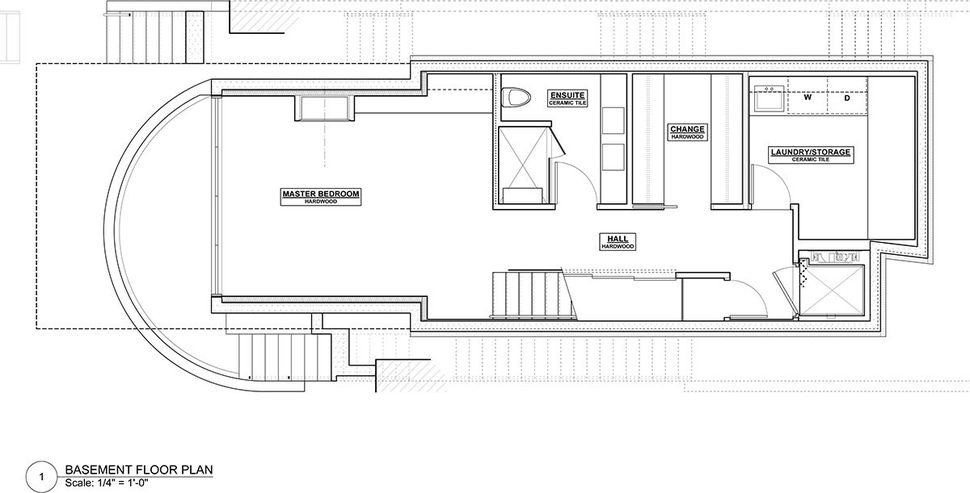
Below the social volume is the Master Suite complete with bedroom, ensuite, walk-in closet, laundry room and private deck.
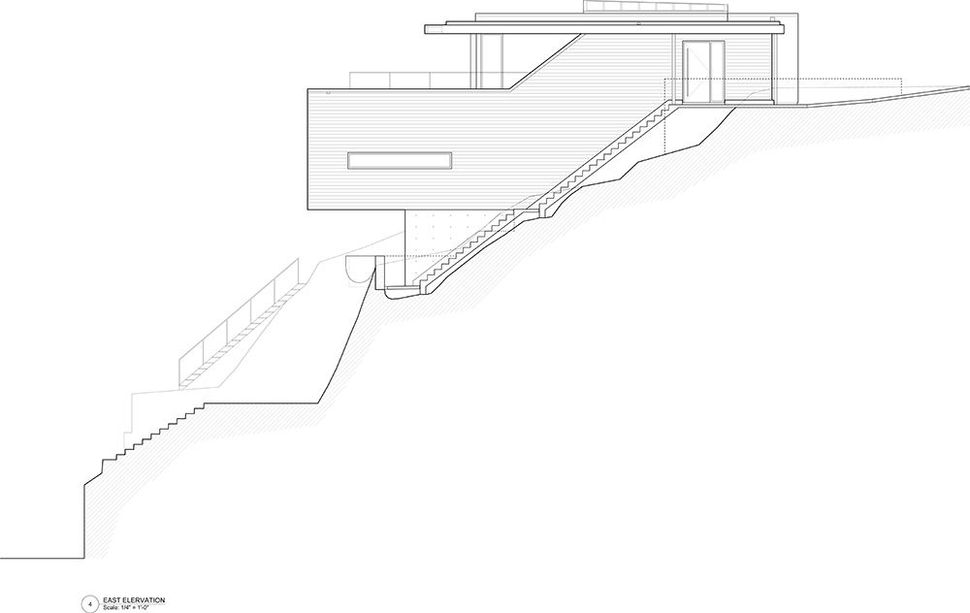
While the outside stairs next to the entryway lead only to the lower deck, on the far side of the home stairs continue down to the private dock.
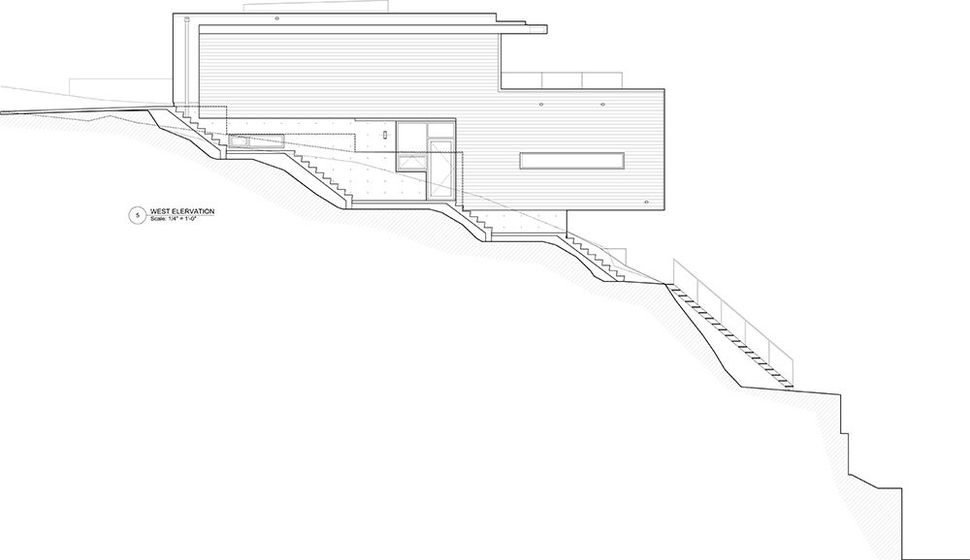
Access to the dockside stairs is next to the garage, through the kitchen door and from the lower deck.
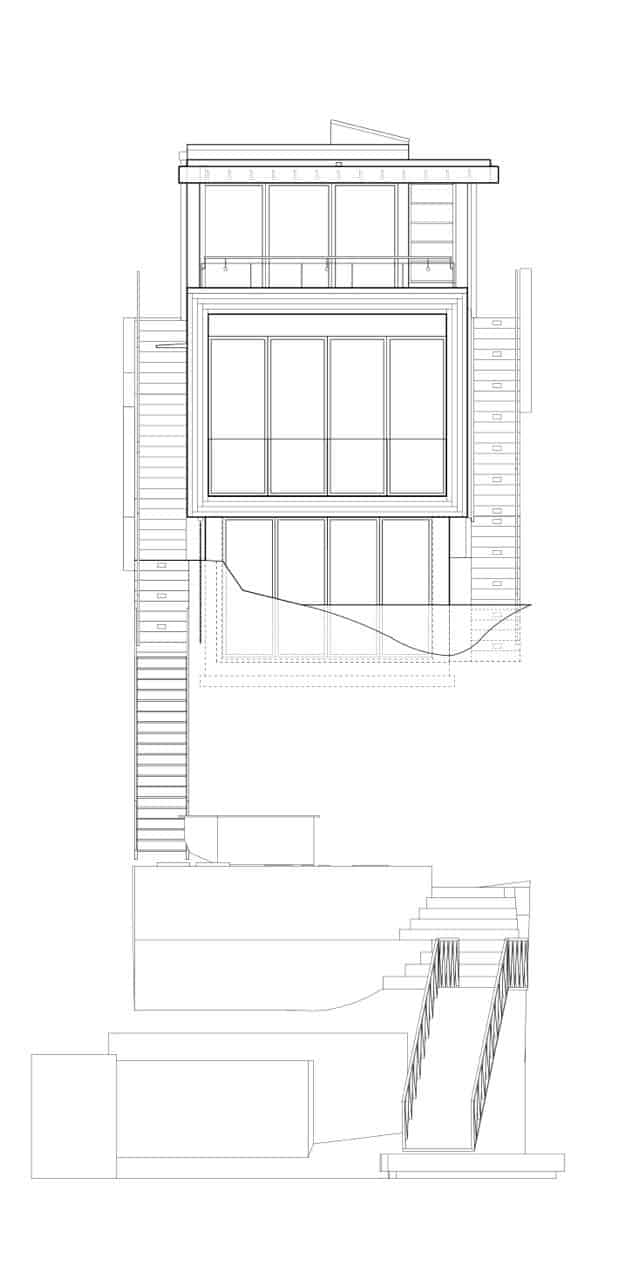
A cliff deck 2/3 down the dock stairs is the perfect place to host a social gathering with friends that travelled by boat to say hi.
Designer: Kevin Vallely Design
Builder: Econ Group Ltd.


